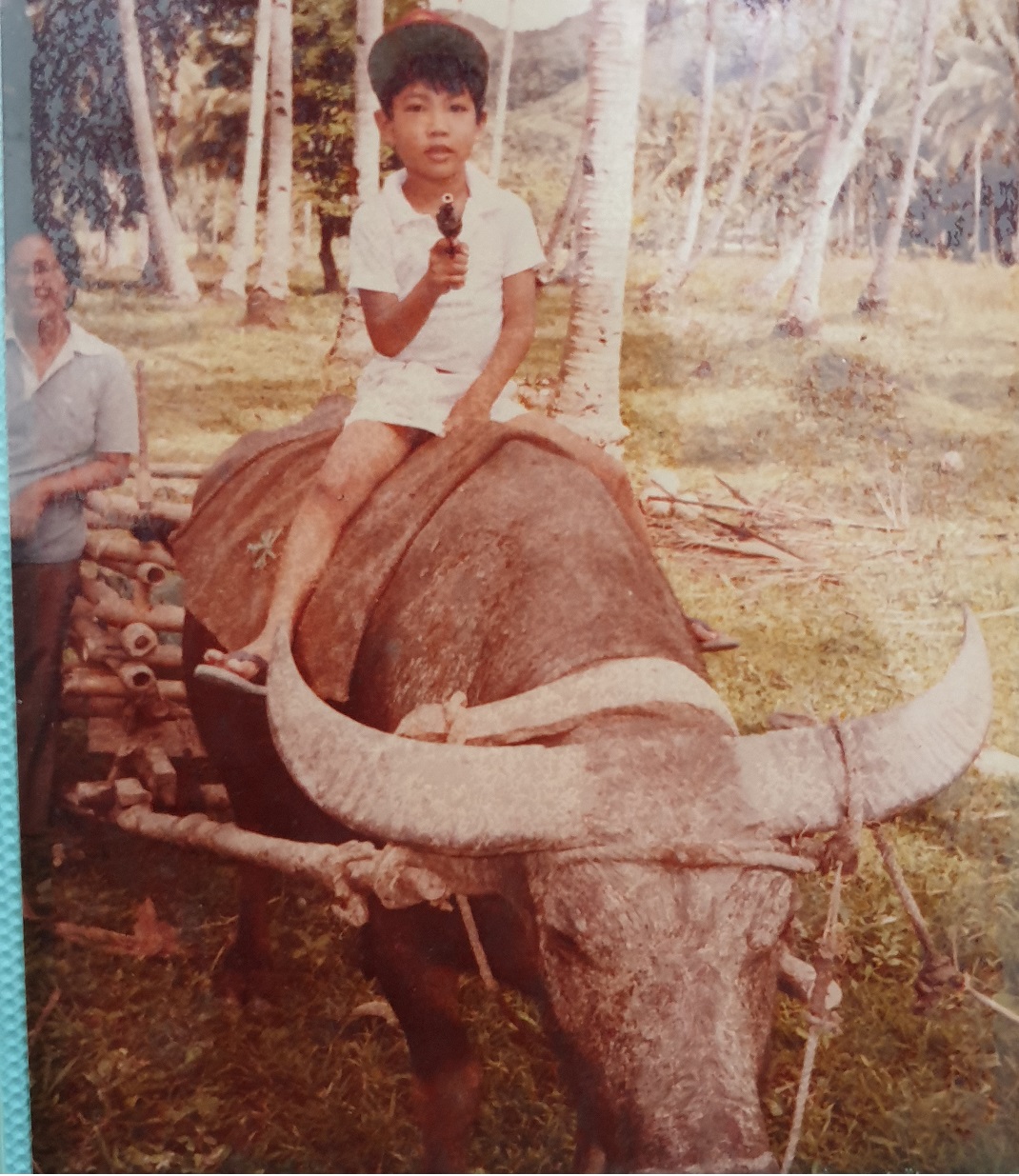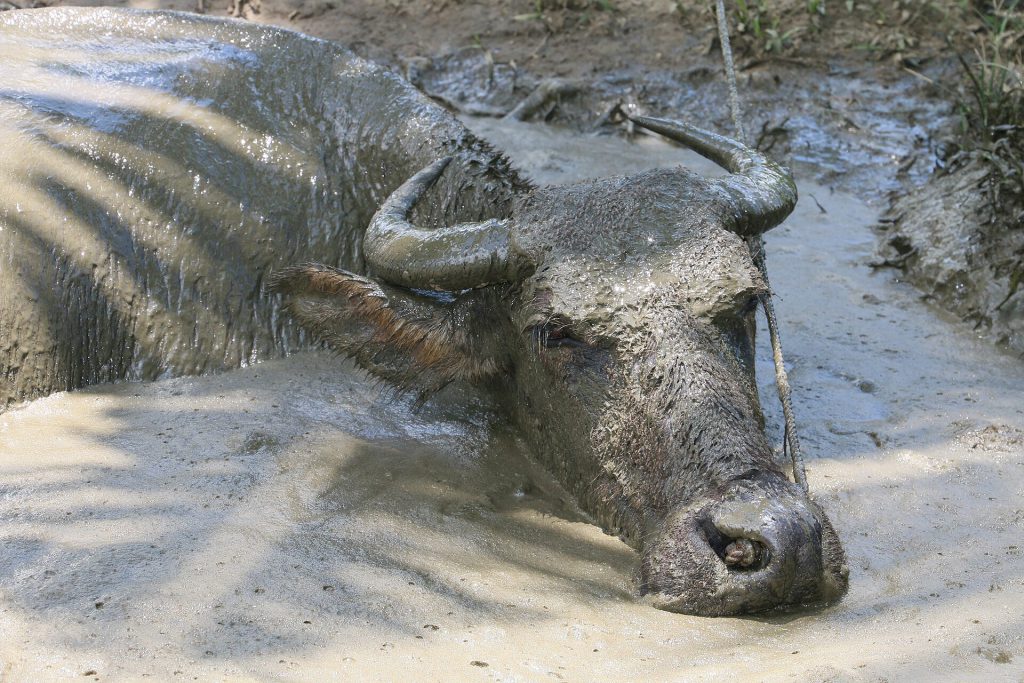
As an Amazon Associate, I earn from qualifying purchases. That means I earn commissions from my sponsored links or I make money when readers (you) purchase items through my links. Your purchase allows me to continue working as a stay-at-home dad who moonlights as a farmer and a musician. Needless to say, this post contains affiliate links.
When we talk about feeding the nation, it’s easy to picture the Filipino farmer sweating under the hot sun planting rice or other plants.
What we often fail to see in our mind’s eye is the animal right beside that farmer.
Through mud, heat, and harvest, stands a quiet hero: the carabao.
Often called the “beast of burden,” the carabao isn’t just a one-dimensional animal.
For generations, it’s been a partner, a helper, and even a symbol — of hard work, patience, and resilience.
And while the world celebrates World Food Day each October, we shouldn’t forget the animal that helps make food production possible for thousands of Filipino farmers.
Let’s take a closer look at the carabao — where it came from, what makes it so special, and why it remains one of the most important creatures in our agricultural story.
Where Did the Carabao Come From?
The carabao, or water buffalo (Bubalus bubalis), is native to Southeast Asia. It’s believed that our ancestors domesticated these gentle giants (most of the time) around 5,000 years ago, mainly for farming and transport.
In the Philippines, the carabao became more than just livestock — it became part of the Filipino identity.
The first settlers and early farmers found them perfectly suited for our tropical climate and muddy rice paddies. Their strength, endurance, and mostly calm temperament made them indispensable for plowing fields long before tractors and machinery arrived.
Today, most Philippine carabaos trace their lineage to the swamp-type water buffalo, while some improved breeds — known as “crossbreds” — come from mixing local carabaos with imported river-type buffaloes from India and Italy.
These hybrid carabaos can produce more milk while still retaining the strength of their local counterparts.
Interesting Facts About the Carabao
There’s more to this humble animal than meets the eye. Here are a few things you might not know:

- They love water. True to their name, water buffaloes spend hours submerged in mud or ponds to stay cool. Their dark, thick skin makes them sensitive to heat, so wallowing is actually their way of protecting themselves.
- They’re incredibly strong. A full-grown carabao can weigh up to 500 kilograms and pull loads more than its body weight — perfect for tilling and hauling.
- They live long lives. With good care, a carabao can live for 20 to 25 years, serving several generations of a farming family.
- They provide more than labor. Aside from farm work, carabaos also provide milk, meat, leather, and even fertilizer from their dung.
- They’re very intelligent and loyal. Many farmers will tell you: a carabao remembers its owner’s voice and routine. Some even respond to their names! And if you mess with one, it remembers…
How Do Carabaos Help Feed the Nation?
The carabao is one of the unsung heroes of Philippine agriculture. Before modern tractors and machines, the carabao was the farmer’s only tool for plowing rice fields. Even today, in remote provinces where fuel and equipment are expensive, the carabao remains the farmer’s best friend.
Here’s what carabaos contribute to farming and food production:
- Land preparation. They plow and harrow rice paddies efficiently, especially in muddy terrain where machines often fail.
- Transport. They can carry sacks of rice, sugarcane, or corn from the fields to the main roads — saving farmers both money and time.
- Milk production. Female carabaos produce rich, creamy milk that’s turned into kesong puti, pastillas, and other local delicacies.
- Organic farming. Carabao manure is used as natural fertilizer, making it vital for sustainable and chemical-free agriculture.
In many ways, the carabao’s contribution is both practical and symbolic — it represents strength without aggression, power with gentleness.
A Final Word
As the world marks another World Food Day, let’s not forget the humble carabao — the silent partner of every Filipino farmer.
In an age where machines hum and drones fly, this gentle creature still plods through the earth, feeding families, supporting livelihoods, and embodying values that define us as a nation.
The carabao teaches us that true strength isn’t loud. It’s quiet, steady, and enduring — like the heartbeat of the land itself.
Here’s hoping that it finally gets its due when it finally, officially gets recognizedas the Official Philippines’ National Animal.
PS
In 2013, House Bill 3926 by Congressman Rene Relampagos was proposed which included a proposal to finally recognize the Carabao as the National Animal.


